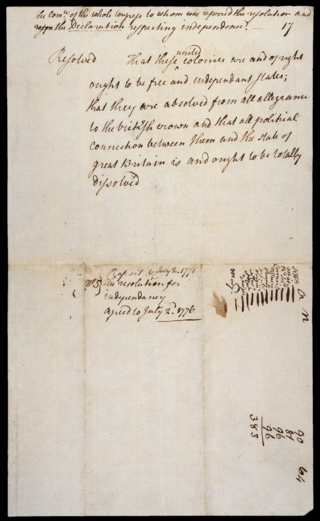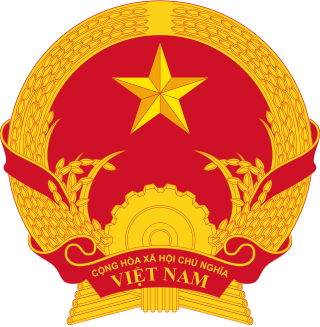The meaning of the word American in the English language varies according to the historical, geographical, and political context in which it is used. American is derived from America, a term originally denoting all of the Americas, ultimately derived from the name of the Florentine explorer and cartographer Amerigo Vespucci (1451–1512). In some expressions, it retains this Pan-American sense, but its usage has evolved over time and, for various historical reasons, the word came to denote people or things specifically from the United States of America.

The national flag of the United States, often referred to as the American flag or the U.S. flag, consists of thirteen equal horizontal stripes of red alternating with white, with a blue rectangle in the canton, referred to as the union and bearing fifty small, white, five-pointed stars arranged in nine offset horizontal rows, where rows of six stars alternate with rows of five stars. The 50 stars on the flag represent the 50 U.S. states, and the 13 stripes represent the thirteen British colonies that declared independence from Great Britain, which they obtained in their victory in the American Revolutionary War.
The diplomatic history of the United States oscillated among three positions: isolation from diplomatic entanglements of other nations ; alliances with European and other military partners; and unilateralism, or operating on its own sovereign policy decisions. The US always was large in terms of area, but its population was small, only 4 million in 1790. Population growth was rapid, reaching 7.2 million in 1810, 32 million in 1860, 76 million in 1900, 132 million in 1940, and 316 million in 2013. Economic growth in terms of overall GDP was even faster. However, the nation's military strength was quite limited in peacetime before 1940.

English plurals include the plural forms of English nouns and English determiners. This article discusses the variety of ways in which English plurals are formed from the corresponding singular forms, as well as various issues concerning the usage of singulars and plurals in English. For plurals of pronouns, see English personal pronouns.

South Vietnam, officially the Republic of Vietnam, was a country in Southeast Asia that existed from 1955 to 1975, the period when the southern portion of Vietnam was a member of the Western Bloc during part of the Cold War after the 1954 division of Vietnam. It first received international recognition in 1949 as the State of Vietnam within the French Union, with its capital at Saigon, before becoming a republic in 1955. South Vietnam was bordered by North Vietnam to the north, Laos to the northwest, Cambodia to the southwest, and Thailand across the Gulf of Thailand to the southwest. Its sovereignty was recognized by the United States and 87 other nations, though it failed to gain admission into the United Nations as a result of a Soviet veto in 1957. It was succeeded by the Republic of South Vietnam in 1975. In 1976, the Republic of South Vietnam and North Vietnam merged to form the Socialist Republic of Vietnam.

The naming of the Americas, or America, occurred shortly after Christopher Columbus's first voyage to the Americas in 1492. It is generally accepted that the name derives from Amerigo Vespucci, the Italian explorer, who explored the new continents in the following years on behalf of Spain and Portugal. However, some have suggested other explanations, including being named after the Amerrisque mountain range in Nicaragua, or after Richard Amerike, a merchant from Bristol, England.

The Nguyễn dynasty was the last Vietnamese dynasty, which was preceded by the Nguyễn lords and ruled the unified Vietnamese state independently from 1802 to 1883 before being a French protectorate. During its existence, the empire expanded into modern-day southern Vietnam, Cambodia, and Laos through a continuation of the centuries-long Nam tiến and Siamese–Vietnamese wars. With the French conquest of Vietnam, the Nguyễn dynasty was forced to give up sovereignty over parts of southern Vietnam to France in 1862 and 1874, and after 1883 the Nguyễn dynasty only nominally ruled the French protectorates of Annam as well as Tonkin. They later cancelled treaties with France and were the Empire of Vietnam for a short time until 25 August 1945.
A demonym or gentilic is a word that identifies a group of people in relation to a particular place. Demonyms are usually derived from the name of the place. Demonyms are used to designate all people of a particular place, regardless of ethnic, linguistic, religious or other cultural differences that may exist within the population of that place. Examples of demonyms include Cochabambino, for someone from the city of Cochabamba; French for a person from France; and Swahili, for a person of the Swahili coast.

Vietnamese Americans are Americans of Vietnamese ancestry. They comprise approximately half of all overseas Vietnamese and are the fourth-largest Asian American ethnic group following Chinese Americans, Indian Americans, and Filipino Americans. There are approximately 2.3 million people of Vietnamese descent residing in the U.S. as of 2023.
In Modern English, the word "you" is the second-person pronoun. It is grammatically plural, and was historically used only for the dative case, but in most modern dialects is used for all cases and numbers.

The Lee Resolution, also known as "The Resolution for Independence", was the formal assertion passed by the Second Continental Congress on July 2, 1776, which resolved that the Thirteen Colonies, then referred to as the United Colonies, were "free and independent States" and separate from the British Empire, which created what became the United States of America. News of this act was published that evening in The Pennsylvania Evening Post and the next day in The Pennsylvania Gazette. The Declaration of Independence, which officially announced and explained the case for independence, was approved two days later, on July 4, 1776.

Commonwealth is a term used by four of the 50 states of the United States in their full official state names: Kentucky, Massachusetts, Pennsylvania, and Virginia. "Commonwealth" is a traditional English term used to describe a political community as having been founded for the common good, and shares some similarities with the Latin phrase "res publica" from which ultimately is derived the word republic.

People from the United States of America are known as and refer to themselves as Americans. Different languages use different terms for citizens of the United States. All forms of English refer to US citizens as Americans, a term deriving from the United States of America, the country's official name. In the English context, it came to refer to inhabitants of British America, and then the United States. There is some linguistic ambiguity over this use due to the other senses of the word American, which can also refer to people from the Americas in general. Other languages, including French, Japanese, and Russian, use cognates of American to refer to people from the United States, while others, particularly Spanish and Portuguese, primarily use terms derived from United States or North America. There are various other local and colloquial names for Americans. The name America came from the Italian navigator Amerigo Vespucci.

The emblem of Vietnam, formally the National emblem of the Socialist Republic of Vietnam, is one of the official national symbols representing the state of Socialist Republic of Vietnam. It is designed circular, having a red background and a yellow star in the middle which represent the five main classes in Vietnamese society—intellectuals, farmers, workers, business people and military personnel; the revolutionary history and bright future of Vietnam. The cog and crops represent the cooperation of agriculture and industrial labor.

The following outline is provided as an overview of and topical guide to the United States Commonwealth of Kentucky:

The following outline is provided as an overview of and topical guide to South Carolina:















